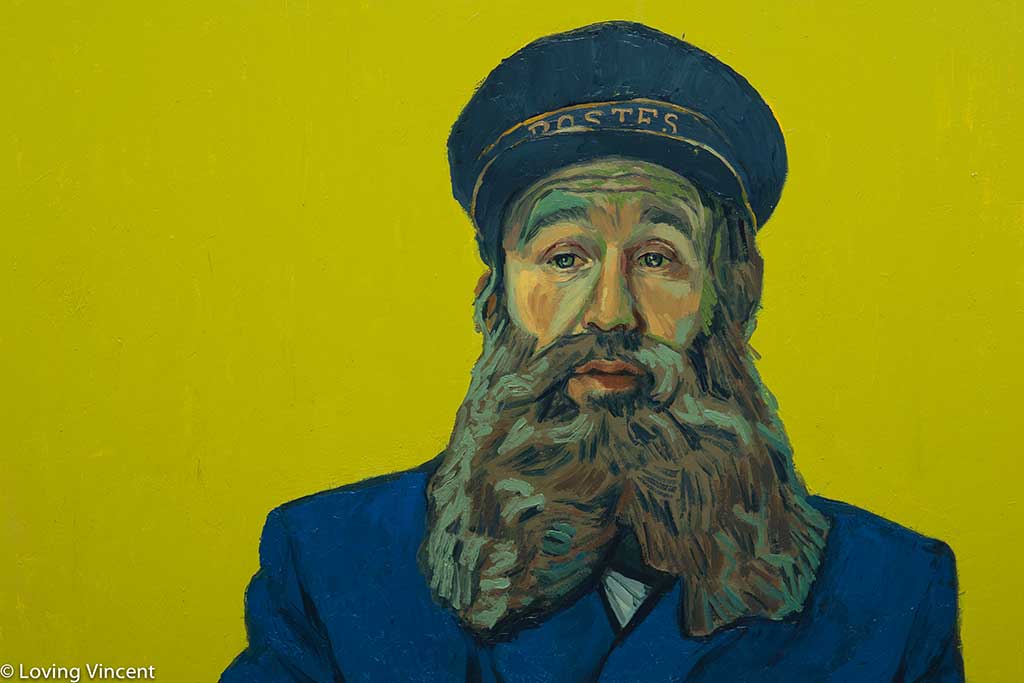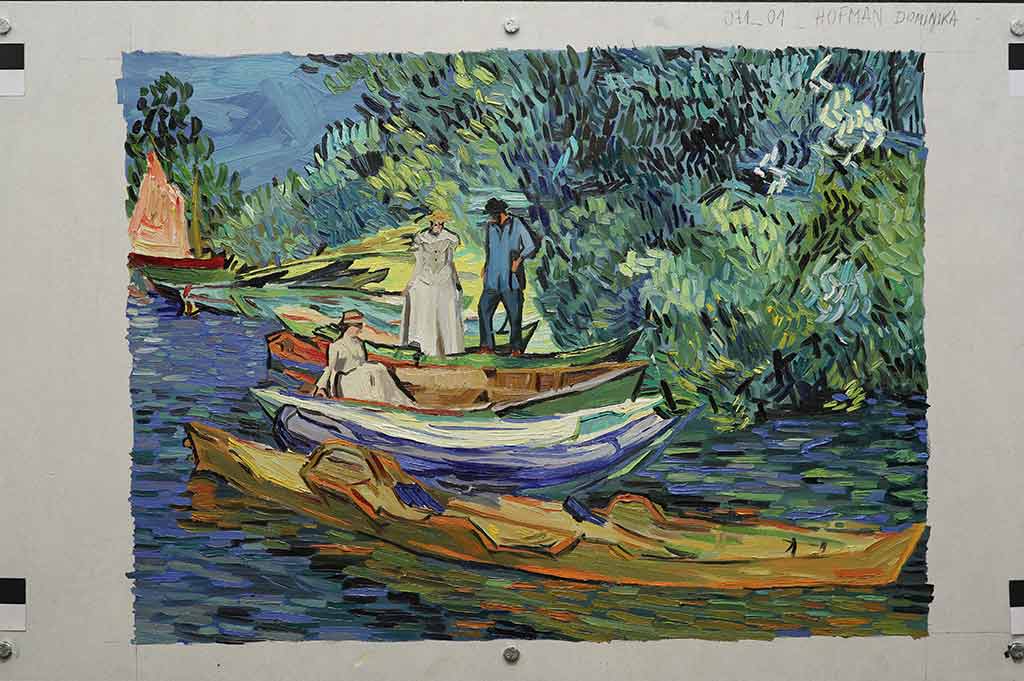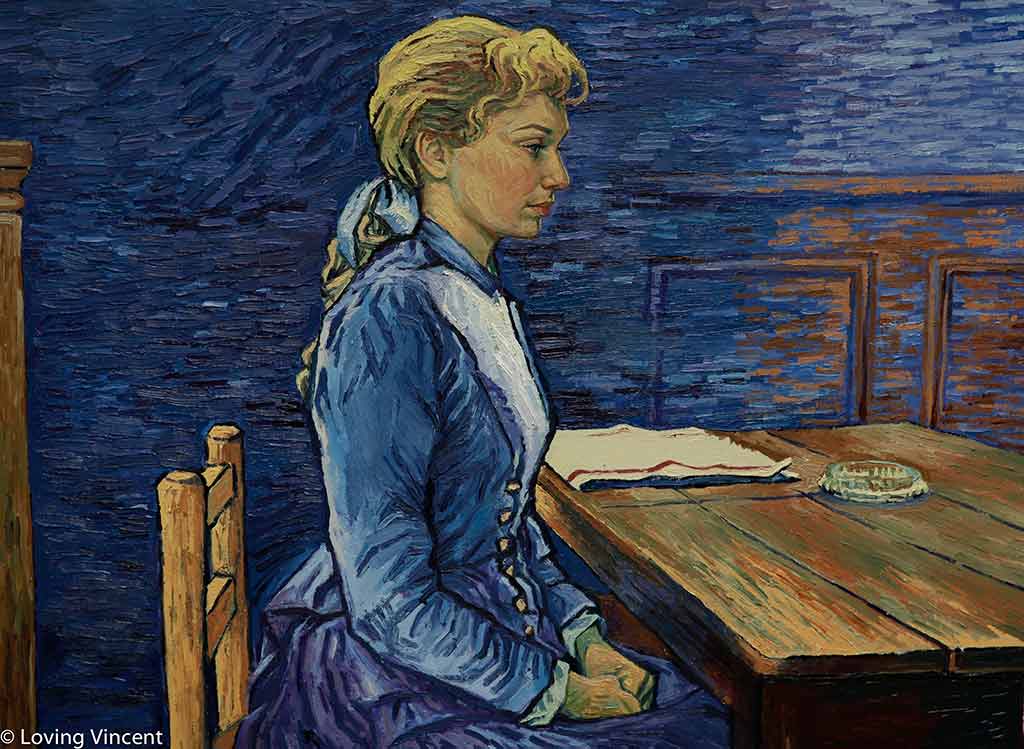With Love, from Vincent
‘Loving Vincent’, the world’s first fully painted feature film, is not just a tribute to the master artist, Vincent Van Gogh, but a telling narrative that goes beyond ‘making’ a film to actually ‘designing’ one, too
Krystin Arneson
The trailer for Loving Vincent is a silent one but for the jarring interruption of a breaking glass bottle – and so its 59 seconds quickly draw you in to focus on the visual. The uncanny feeling of familiarity places you in the setting as scenes shift and change: You’ve seen these skies before in Starry Night, these fields in namesake Vincent Van Gogh’s pastoral paintings. But the ever-present flicker of the oil-painted animation brings a frozen medium to life – and, in turn, resurrects the artist who revolutionised it and inspired the film to re-examine his life and his death. Art teachers always say paintings tell a story; but here, it’s as if one lined up Van Gogh’s paintings side by side, waved a wand, and somehow extracted a narrative thread linking all of them. A week before his death, Vincent Van Gogh wrote to his brother, ‘We cannot speak other than by our paintings’. The sentence rings true here with this homage to one of visual art’s most famous talents.
The film’s medium removes viewers from the traditional one-way, didactic nature of cinema to engage in a dialogue with the artist via his chosen medium: oil painting. For the sake of the film’s purposes, this amounted to 62,450 paintings, or 12 per second, created by a team of 85 artists at the film’s studios in Poland and Greece.

An extra step was involved in the creation of this cinematic feat: The film, directed by Dorota Kobiela and Hugh Welchman (who are now married, partly as a by-product of working on this project), was shot first as a live-action movie in London and Wroclaw against either a set designed to look like a Van Gogh painting or against a green screen. And it has star credentials, featuring actors such as Saoirse Ronan (Brooklyn, Atonement), Chris O’Dowd (Bridesmaids), Jerome Flynn (Game of Thrones) and theatre veteran Robert Gulaczyk in his first film role as Van Gogh himself.
Surprisingly, the film does not involve as much Van Gogh as one would expect – and it’s in a bit of a round about way. ‘It is an investigation delving into the life and controversial death of Vincent, as told through his paintings and by the characters that inhabit them,’ says Kobiela in the press kit that the studio shared with us. ‘The intrigue unfolds through interviews with the characters closest to Vincent and through dramatic reconstructions of the events leading up to his death.’ Kobiela emphasises that the main characters in the film are the paintings themselves, compared to other films where they serve mostly as a prop. As far as the people they depict, though, there’s Armand Roulin (Douglas Booth), who, in the summer of 1891, is told by his father, Postman Joseph Roulin (O’Dowd), to deliver a letter to the brother of Van Gogh – the artist has just killed himself. For Armand, this is horribly embarrassing: Van Gogh, after all, is a madman, a failed artist who, yes, severed his ear, was shipped off to the asylum, and now, committed suicide.

Long story short, the brother is also dead, and Armand winds up travelling around France a bit, learning more – and teasing out the answers to the lingering question – about Van Gogh’s life. Of course, it turns out the artist isn’t who he thought after all, but viewers are swept along on the journey with him, challenging their expectations of the distilled character we so often come across in art history textbooks, at museums and in popular culture.
But back to the paintings: It’s important to note that these two media – painting and film – initially present a problem. Painting is, after all, a snapshot before snapshots existed – if not of a setting that actually existed, of a moment that exists only in one’s imagination before being set down on canvas. In either case, painting, no matter how dynamic the painterly strokes, is frozen. Film, meanwhile, is frozen in that it is recorded and edited and eventually set down, but it is also progressive and doesn’t have to rely on a single canvas to tell a story. It has the luxury of multiple takes, of multiple locations, of zooming in and zooming out for scene-setting and nuance, of editing, of time.
Some modification, of course, was necessary: Sometimes characters that appeared in one style would pop up in a different painting in another. Some paintings that were of one season had to be changed to another for the sake of storyline. Actors, too, had to be changed to be recognisable as the original subjects, yet retain some characteristics of their real-life persona – 377 ‘design paintings’, works that achieved this balance, were created during the process of creating the film. It’s sort of a 19th-century take on the live-action-plus-CGI combo big-budget films like Avatar use.
After the initial filming, the ‘character design painters’ painted over the live-action ‘reference footage’ within a 67-centimetre-by-49-centimetre frame to create the first frame of the movie. And then animation began through the painstaking process of re-painting the frame – brushstrokes shifting just so, colours flickering in and out. In all, 62,450 frames were painted and photographed in high resolution by a Canon D20, and so the end product of this more-than-two-year process will be 62,450 hi-res photographs of 62,450 oil paintings.

And why Van Gogh for this, after all? There are any number of painterly greats who would be equally well suited: Gaughin, with his slightly problematic South Seas adventures; Toulouse-Lautrec, who helped define the character of Belle Epoque nightlife – the list could go on. But Van Gogh is as much a character in the great drama of history – more explicitly, art history – as he is a historical figure. Van Gogh is legendary: an artist who never sold a painting in his lifetime, a lustful genius, a madman who not just cut his own ear off but mailed it to the one who did him wrong. In the passing of the decades since his death, his status has become more mythical than man: ask someone who knows nothing about art, and they will know who he was – even Welchman had little knowledge of the artist before he dove into this project.
‘The thing that amazed me the most was the fact he only started painting at the age of 28,’ says Welchman in the press kit. Welchman began reading voraciously about Van Gogh as he began learning more about Kobiela’s project. ‘In the space of nine years, he managed to revolutionise art, and left an astounding body of work. He was a truly passionate man, and he suffered for that. One of the exhibitions I visited was about his letters, and there was a three-and-a-half hour queue to see his letters. At that point I realised how many people Vincent’s words, as well as his paintings, had touched.’

This film, of course, is quite literally a work of art. And so the best way to watch the film is to do it twice: once for the pure enjoyment of the documentary, then again to understand what you’re looking at. Just like Van Gogh’s paintings, the film is beautiful at a passing, surface level; but it’s when you pause to zoom into his works and take a second look that you realise their true mastery.
_______________________________________________________________________________________________________
All images are stills from the animated film Loving Vincent, 2016
Directed by Dorota Kobiela and Hugh Welchman
Produced by BreakThru Films
Image Courtesy of BreakThru Films.
Share
